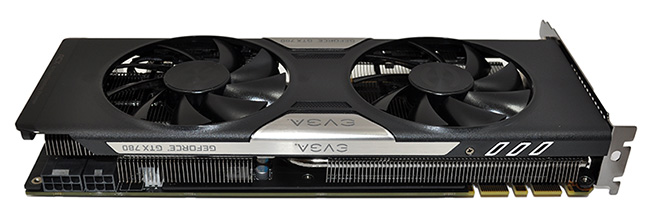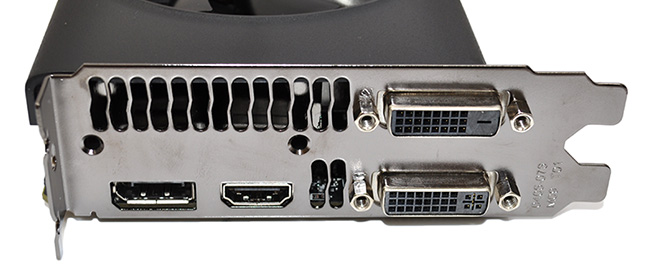GeForce GTX 780 on steroids
As you know, we've been impressed by Nvidia's newly unveiled GeForce GTX 780. So much so that we've named it our favourite enthusiast card.
Sure, it's pricey at £550, yet it does deliver Titan-like performance on the *cough* relatively cheap. One of the problems we did identify, however, is that Nvidia's reference design is so well-engineered that add-in-board partners would have great difficulty in bettering it with non-standard models.
Well, credit to EVGA, who has proved us wrong with the GeForce GTX 780 Superclocked ACX. Priced at a dizzying £625 (that's some 13 per cent more than a standard GTX 780), this here custom-cooled and factory-overclocked derivative aims to rein in the Titan and, quite possibly, shoot to the top of the single-card performance charts.
Doesn't seem right for a £625 card to usurp an £800 Titan, but EVGA might just do it with a core overclocked to 967MHz. That's only 12 per cent higher than reference, and the 3GB GDDR5 frame buffer isn't overclocked at all - it hums along at the default 6,008MHz - but what makes the Superclocked card a bit more special is that it GPU Boosts like a mofo, excuse our French.
The card's specification lists a Boost frequency of 1,020MHz, but as we know you need to take such numbers with a pinch of salt, as the actual frequency will depend on various factors - including core temperature, card power consumption and just how adventurous the manufacturer wants to be.
To give you an example, our GTX 780 reference board would typically GPU Boost up to 902MHz during testing. EVGA's GTX 780 Superclocked sat at a cool 1,124MHz through an entire run of Far Cry 3. Yep, most of the time, it's boosting 24 per cent higher than the reference board.
How is that possible? Good question. Putting on our conspiracy-theorist hats, it's possible Nvidia has purposely limited the GPU Boost capabilities of the reference GTX 780 via the software BIOS in order to prevent it from beating up on Titan. Nvidia understandably needs to keep a modicum of differentiation between its two range-topping giants.
Or it could just be a testament to EVGA's design. The Superclocked card isn't, in our opinion, quite as eye-catching as Nvidia's reference board - we sure do miss the backlit GeForce GTX logo - but you can (and we will) argue that it works better.
At the heart of the design is a new cooler dubbed ACX (Active Cooling Xtreme). Going by the marketing material, which there's plenty of, ACX claims to beat competing dual-fan solutions through the use of; double ball-bearing fans that promise a 20 per cent increase in efficiency coupled with a 15 per cent reduction in noise; fan blades that audaciously claim to be 700 per cent stronger while weighing 25 per cent less; a PCB-covering baseplate that's said to reduce MOSFET and memory temperature by seven per cent and 15 per cent, respectively; and dual heatsinks promising a 40 per cent increase in fin volume.
Put all that together with five GPU-connected heatpipes and EVGA reckons the card will deliver a 15 per cent reduction in core temperature, which would of course provide the headroom needed for GPU Boost shenanigans.
Jacking up core frequency is EVGA's prerogative, yet the underlying GeForce GTX 780 goodness remains intact. Despite the dual-fan ACX cooler, the Superclocked card is still a dual-slot solution measuring 10.5in from end to end, and it tips the scales at a reasonable 862g.
Knowing not to mess with what's already a good thing, outputs are kept in line with Nvidia's standard specification; meaning the card can drive four independent displays without the need for any special adapters.
All told, this is shaping up to be one of the best GeForce GTX 780s that money can buy. Let's see what it can do.













